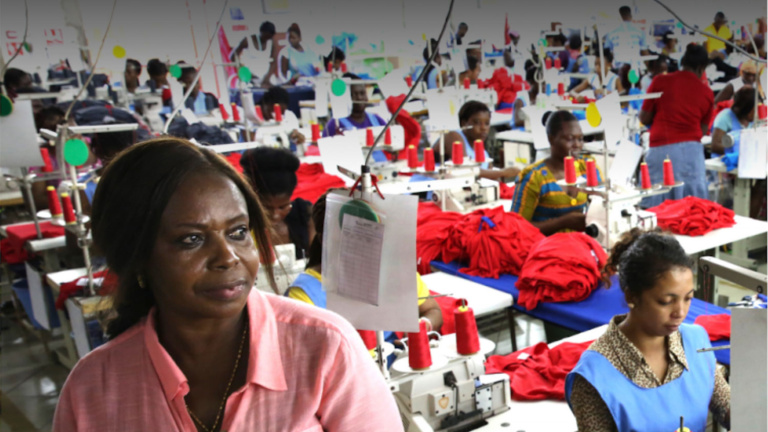
Multinationals: Local adaptation key to sustainable development
This article highlights research findings on the connections between the embeddedness of multinational corporations and their sustainability impacts in host countries. Embeddedness appears to be a critical factor in enabling the local private sector and communities to benefit from the operations of multinational enterprises in developing countries and emerging markets.
Multinational corporations (MNCs) face increasing public scrutiny to demonstrate that their core activities comply with mandatory and voluntary ethical, governance, and ecological standards. However, measuring the sustainability impacts of a company’s operations remains a challenge. Embeddedness is a tool that can help tackle that challenge.
Economic historian Karl Polanyi coined the term embeddedness to capture the idea that all actions that individuals choose are refracted by the social relations in which they function. In other words, MNCs do not operate in a vacuum; they are part of the communities they serve. Embeddedness of economic relations encompasses a subsidiary’s engagement and its relationships with local suppliers, farmers, communities, and all other stakeholders, while strictly abiding by sustainability standards and principles. Embeddedness encompasses many aspects of society, the economy, institutions, and structures of governance, in addition to interactions with the natural environment.
The hypothesis is that locally embedded companies create positive sustainability impacts for the local population, the economy, and the environment. The ‘extent’ of local embeddedness refers to, among other things, collaboration with local institutions, contributions to human capital formation, the share of local suppliers, and participation in local public-private partnerships. The ‘quality’ of embeddedness is the actual impact of local embeddedness, in terms, for example, of fostering a transition from informal to formal economic activity and employment, improving infrastructure, or increasing savings.
The methodology used to analyse embeddedness is a mixed-methods approach encompassing company surveys completed by senior management to form the baseline of a company’s embeddedness. The surveys are also designed to reveal any perception gaps between senior management and stakeholders, including industry experts, the media, and local communities. ‘Perception gaps’ are starting points for companies to conceive innovative means of generating stronger positive sustainability impacts while minimising negative externalities and political risks.
A recent analysis, not yet published, measured sustainability impacts generated by locally-embedded Swiss-based MNCs. It includes Syngenta’s agro-businesses in crop protection and the potato value chain in Kenya and Colombia; Chiquita’s banana production and exports in Costa Rica, Panama, and Guatemala; and Nestlé’s cocoa business in Indonesia and coffee operations in the Philippines.
Embeddedness: An innovative approach
The challenge for developing country governments is to maintain the vital role of their commodities in national socio-economic development. So far, analytical frameworks for evaluating local embeddedness of corporations were not linked to sustainability. The approach to local embeddedness of corporations took the perspective of industrial policy or risks, in the sense that embedding corporations in the local economy might increase economic dependence and influence local policy decisions in favour of external interests.
Our analysis on the embeddedness of MNCs incorporates several novelties. One of these is the advent of ISO 26000 guidelines on community involvement and development. Examination of the network relations of MNCs reveals the embedded ties that create value through mechanisms of trust, knowledge transfer, and joint activities seeking solutions to critical challenges along value chains.
Dimensions of embeddedness
Embeddedness is not a monolithic concept. It comprises a number of core dimensions that can be achieved to different extents. Depending on the nature of their business operations, companies may choose to measure additional embeddedness dimensions and sustainability impacts.
Figure 1 illustrates the sustainability impacts and degree and quality of embeddedness of Company X. The eight core sustainability impacts depicted are derived from ISO 26000. These are (i) economic empowerment, (ii) labour rights and fair operating practices, (iii) environment, (iv) education, (v) culture, (vi) infrastructure, (vii) health, and (viii) technology development and access.
Figure 1: Degree and quality of embeddedness and sustainability impacts of Company X

Technology development and access is the dimension where embedded firms produce their greatest sustainability impacts, which include increased productivity, greater market access for local companies, and enhanced livelihoods. These are impacts often created and strengthened through business partnerships and collaboration with local research and technical institutions. For some firms, opportunities to improve sustainable production may depend on local firms having the capacity and ability to acquire and adopt technology and their access to capital and to markets. Such firms could improve their ‘spatial’ embeddedness (a non-core embeddedness dimension) by expanding joint ventures and business linkages, in order to develop local private sector capabilities. Cooperatives are best suited for the efficient and targeted delivery of knowledge and services to smallholder farmers. This vehicle is used, for example, by Mars Corporation in Indonesia with the technical support of VECO, a Belgian NGO. Mars is legally linked to farmers through purchase contracts with a farmer’s cooperative.
The local economic empowerment dimension captures the effects of an MNC’s local operations on the economy. For example, MNC activities may foster entrepreneurship, boosting the local economy. Promoting entrepreneurship and creating local businesses within or outside the core value chain enables an increasing number of existing and new local enterprises to partner with MNCs in a range of value-adding activities.
Furthermore, MNCs can generate transparency and help counter corruption by transmitting best practices and standards to business partners in a host country. The presence of an MNC may similarly promote improvements in workers’ rights. The presence of an MNC can attract different enterprises and services, stimulating establishment of an economic hub that advances the local economy. Creating shared value requires close relations between an MNC and local producers. Companies that are loosely associated with suppliers or supporting them at arm’s length exhibit a lesser ‘extent’ and ‘quality’ of embeddedness. Being economically empowered allows poor people to think beyond daily survival and exercise greater control over both their resources and their life choices. A major focus of economic empowerment is advancement of women, addressing gender inequality. Other key areas are promotion of assets for poor people, transformative forms of social protection, microfinance, and skills training.
The environmental dimension of embeddedness includes actions that a firm undertakes to prevent environmental pollution, to foster sustainable use of resources, to protect the environment and biodiversity, to restore natural habitats, and to mitigate the impacts of climate change.
Regarding the other dimensions, education and culture involves educating and enabling consumers to make informed, independent choices about products and services while being aware of their rights and responsibilities and how to act upon them. The provision and strengthening of essential physical as well as social infrastructure is fundamental to ensure people’s safety, health, and productivity. Social infrastructure impacts economic growth and reduces poverty, but it requires a good understanding of the needs of communities. Labour rights and fair operating practices are a fundamental aspect of respect for the rule of law and a sense of fairness within society. Creating and maintaining decent jobs and wages for work performed are among a firm’s most significant economic and social contributions. They are essential to social justice, stability, and peace. Health is crucial for life. Undermining public health undermines communities. Firms contribute and support public health campaigns for prevention and mitigation of adverse health impacts. Social investment occurs when firms invest in initiatives and programmes designed to improve aspects of community life. Examples are education, training, cultural activities, the healthcare system, income generation projects, infrastructure development, and maintenance.
Beyond the eight core dimensions of embeddedness, positive externalities of corporations can be enhanced or impeded by the prevailing political system, political culture, local institutions, and the type of mandate governing commodity marketing boards. It is essential to understand political aspects, for example, how firms interact and comply with local institutions and the impacts of their activities in shaping public policy and collaboration. The corporations in our research stressed their ‘politically embeddedness’, as they complied with the laws and regulations of the host country. Politically embedded MNCs have various challenges to cope with, such as inter-ministerial coordination and information asymmetries brought about by decentralisation policies and the sometimes conflicting roles assigned to different government levels.
General conclusions
Overall, the embeddedness analysis suggests that MNCs do not necessarily represent a threat to local informal businesses and small and medium-sized enterprises. Embedded MNCs can function as enablers, boosting even the informal sector to grow in a supplier role, provided that they increase the local stock of human capital through apprenticeship programs and collaborations with local partners and universities.
Embeddedness particularly benefits the local private sector when business linkages and institutional networks lead to knowledge and technology transfer and when local firms and producers are technology-ready – able to innovate and adopt sustainable practices. Embeddedness also appears to be more effective when supported by public policies that create opportunities for inclusion.
Building on these findings, an embeddedness toolkit is being tested to enable the Swiss MNCs participating in this research to identify the strengths and weaknesses of their foreign direct investments (FDI). The aim is to enable quick assessment of the impacts of their embeddedness. Three sustainability rating and consulting agencies – InRate and Brugger & Partner – are testing a tailored version of the embeddedness toolkit as part of their sustainability assessments and company ratings.
About the author
Constantine Bartel is development and trade expert at the Centre for Corporate Responsibility and Sustainability (CCRS) at the University of Zurich and founder of the African Technology Development Forum (ATDF).
Read the full magazine issue









